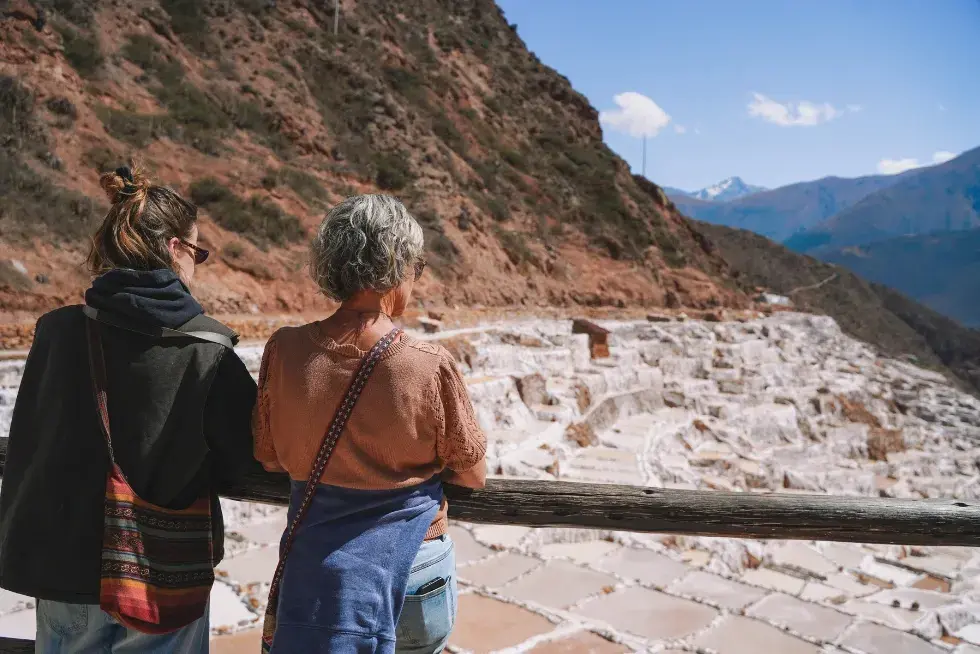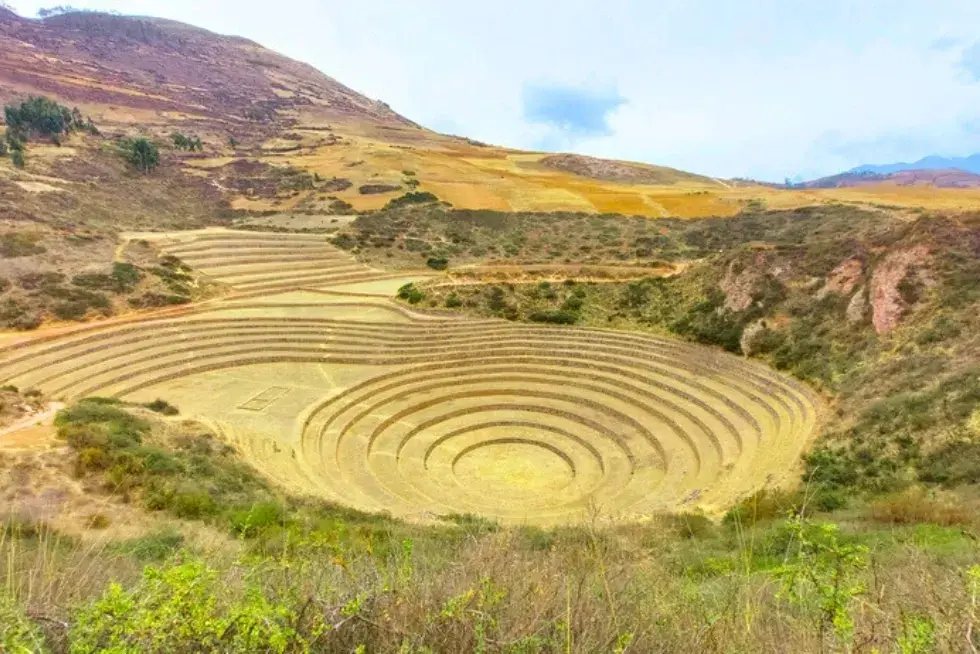Nestled along the picturesque shores of Piuray Lagoon, the quaint village of Cuper Bajo offers a unique experiential tourism encounter. Engage with the rich local culture as you delve into the expertise of community members in the realms of textiles and agriculture, creating a truly immersive and authentic experience.
📍 This tour includes sensitive destinations, therefore we request you to be as environmentally friendly as possible.
🍏 All food on this tour is prepared mostly with local ingredients.
TRIP SUMMARY
Day 1: Textile community of Cuper Bajo
Day 2: Chinchero – Maras – Moray – Urubamba
Embark on a cultural odyssey as you venture into the heart of the Peruvian Andes, where Day 1 unfolds in the enchanting textile community of Cuper Bajo. Immerse yourself in the rich traditions of this vibrant village, discovering the intricacies of local textiles and engaging with the warmth of the community, setting the tone for an unforgettable journey through authentic experiences.
Day 1: Textile community of Cuper Bajo
In the morning we make a 50-minute trip to the Cuper community. Upon arrival, the villagers will give you a warm welcome with music and welcome teas, then you can leave your stuff in the family lodge. It is time to visit the community center where you will be introduced to the local costumes, you will have the opportunity to wear the typical dress and take pictures and you will be able to participate in agricultural activities depending on the planting season.
In the afternoon you will take a walk around the lagoon to enjoy the quietness and beauty. of the scenery.
Meals: Lunch, Dinner
Accommodations: Overnight stay in the community house
Day 2: Chinchero – Maras – Moray – Urubamba
After a comforting Andean breakfast, it is time to say goodbye to our hosts and begin a 1 hour hike to the archaeological center of Chinchero. During the hike we will have beautiful views of the Piuray lagoon, as well as of the mountains surrounding the Sacred Valley of the Incas. After visiting the archaeological center of Chincheros we will go to the salt mines of Maras and circular terraces of Moray. At the end we head to Urubamba where we will relax and spend the night, to visit Machu Picchu the next day, or simply return to Cusco.
Meals: Breakfast
INCLUDED
- Lodging in the community house.
- Private transportations.
- Private guided excursions.
- All admission fees.
- 1 Breakfast, Lunch and Dinner as described in the itinerary.
NOT INCLUDED
- International & domestic airfares, unless specifically mentioned.
- Travel insurance.
- Items of personal nature such as gratuities, internet charges, excess baggage charges, laundry, beverages and meals not described in the itinerary.
PRICE PER PERSON
Standar: Upon request
Discounts:
Student Discount:
All travelers under the age of 17 will have a discount. If you are 25 or younger, you can get a special discount with your student card. Please advise by email to give you a code for the discount.
Comunidad Andina De Naciones:
Special discounts for residents of the Andean Community of Nations.
Andean Community: corresponds to residents of Peru, Colombia, Ecuador and Bolivia.
Changes: You can make changes to your reservation up to 48 hours before your trip at no additional cost.
No show and Cancelations: If you cancel 30 days before the trip before 6:00 pm (Lima time), a 60% administrative charge will be applied. After this time, there is a cancellation or no show charge of 100%.
WHAT TO PACK?
- Travel Documents: Passport, travel insurance, flight tickets, and any necessary visas.
- Clothing: Lightweight, moisture-wicking clothing for daytime activities, Warmer layers for cooler evenings, Rain jacket or poncho in case of unexpected rain.
- Footwear: Comfortable walking shoes or hiking boots.
- Accessories: Hat and sunglasses for sun protection.
- Personal Items: Daypack for carrying essentials during excursions, Sunscreen and lip balm with SPF, Insect repellent, Personal toiletries, Camera or smartphone for capturing memories, Power bank for charging electronic devices, Reusable water bottle to stay hydrated.
- Optional: Snacks for the journey, Binoculars for birdwatching during nature walks, Notebook and pen for journaling or sketching, Small gifts for the local community
- Cash: Bring cash in local currency in case you need to buy anything or tip your guides.
Preparing for an exciting adventure? Get answers to common queries about our Trip. Your go-to guide for destination insights, logistics, and more. Let's make your journey seamless and memorable!
What makes the textile community of Cuper Bajo unique?
Cuper Bajo is known for its immersive experiential tourism, offering visitors the chance to engage with local experts in textiles and agriculture, wear traditional costumes, and participate in agricultural activities.
What activities are included during the afternoon at Cuper Bajo?
In the afternoon, you'll take a leisurely walk around the lagoon, immersing yourself in the serene beauty of the scenery.
What personal items are recommended to bring for this trip?
Recommended personal items include a daypack, insect repellent, sunscreen with SPF, and personal toiletries.
How long is the hike to the archaeological center of Chinchero?
The hike to the archaeological center of Chinchero is approximately 1 hour, offering stunning views of the Piuray lagoon and the surrounding mountains.
What is significant about the salt mines of Maras?
Maras is renowned for its ancient salt mines, which have been used since Inca times. The unique terraced pools create a stunning visual landscape.
What are the circular terraces of Moray known for?
Moray features circular agricultural terraces that served as an Inca agricultural laboratory, allowing experimentation with different crop conditions.





